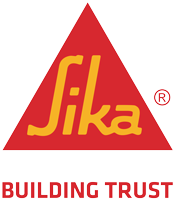Shanghai Chemical Industry Park (SCIP), China
Waterproofing and protection for an integrated water supply and wastewater treatment plant

Location: Shanghai, People Republic of China
Market sector: Wastewaste treatment
Products used:
The background
Shanghai Chemical Industry Park (SCIP) is one of China’s most heavily-invested industrial projects specializing in the petrochemical and fine chemicals businesses. In the development of their new phase 5 construction, SCIP called for anti-corrosion protection solutions for wastewater treatment facilities, including homogenization tanks, neutralizing tanks, anoxic ponds, aeration tanks, secondary sedimentation tanks, and service reservoirs, that handle 50,000 tons of industrial sewage daily, over a protection area exceeding 12,000 m2 in total.
The challenge
The original protection layer specified for the wastewater tanks design was done by acid-resistant tiles. Unfortunately, acid resistance tiles faced huge difficulties when defects appeared and repair was required, as the retiling process could be costly and time-consuming.
Another concern was the corrosion protection application which was scheduled during the rainy season. Constantly moist substrates will hinder the applications for both the acid resistance tiling and the protective coating.
Our solution
MasterSeal 7000 CR, powered by Xolutec® - our unique technology developed for improved durability, is the ideal waterproofing and concrete protection solution for SCIP. Combining unique application and performance features to meet the challenges of harsh wastewater environments.
MasterSeal 7000 CR facilitates high resistance against abrasion and biogenic sulphuric acid corrosion and can withstand severe conditions in pre-treatment and aeration tanks, digesters, or the concrete infrastructures of wastewater treatment systems, that are subject to several complex chemical corrosion processes and constant abrasion. It is the perfect solution for the industrial water and wastewater treatment facilities for SCIP.
View complete project reference here


